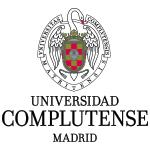MALDI-TOF-MS as potential tool for identification and differentiation of Streptococcus spp. recovered from pigs
Comunicación presentada en 4th Med-Vet-Net Annual Scientific Meeting 2015 (Global Challenges in Zoonoses: Combating Emerging Threats using a One-Health Approach)
8 de octubre de 2015
Perez-Sancho M., Vela AI., Florez-Cuadrado D., San Martin E., Casamayor A., Pulido E., Dominguez L. y Fernandez-Garayzabal JF.
Isolation and identification of streptococci by conventional methods is often difficult and time consuming. In recent years, matrix-assisted laser desorption/ionization time-of-flight mass spectrometry (MALDI-TOF-MS) has become a rapid and simple method to identify bacteria. This study evaluated the accuracy of the MALDI-TOF-MS technique for identification of different species of streptococci associated with disease in pigs (S. dysgalacteae, S. porcinus, S. suis) or isolated from pigs clinical specimens (S. plurextorum, S. porci, S. porcorum, S. bovis, S. thoraltensis, S. orisuis, S. hyovaginalis, S. ferus and S. alactolyticus) which may hamper the diagnosis of streptococcal infections in pigs. Seventy-two isolates of Streptococcus species recovered from diseased and healthy pigs were included in this study. All isolates were preliminarily identified by 16S rRNA gene sequencing and then subjected to MALDI-TOF-MS analysis. S. plurextorum; S. porci, S. porcorum and S. bovis were not included in Bruker Database. Peak analysis of individual spectra from the reference strain of these species was chosen to create reference spectra to complement the Bruker database (Updated Data Base, UDB). Spectra from all 72 isolates were analyzed against the UBD. Overall, MALDI BioTyper software accurately identified at species level 88.9% of isolates: 62.5% (45/72) exhibited score values ≥ 2.300 and 26.38% (19/72) with scores values between 2.299-2.000. Only two isolates were identified at the probable genus level with score values of 1.742 and 1.955. MALDI-TOF showed a good performance for differentiation of Streptococcus recovered from swine although potential misidentifications were observed among some species (e.g. S. plurextorum and S. porci).
 | Servicio de Identificación y Caracterización Microbiana (ICM). Centro de Vigilancia Sanitaria Veterinaria (VISAVET). Universidad Complutense (UCM). |
| CEI Campus Moncloa. | |
 | Universidad Politécnica de Madrid (UPM). |
 | Departamento de Sanidad Animal. Facultad de Veterinaria. Universidad Complutense (UCM). |
Enlace a 4th Med-Vet-Net Annual Scientific Meeting 2015 (Global Challenges in Zoonoses: Combating Emerging Threats using a One-Health Approach)


